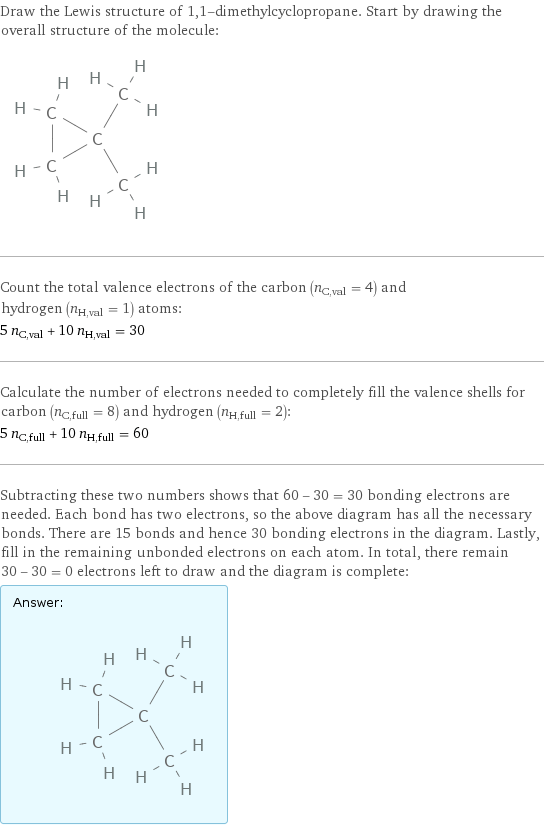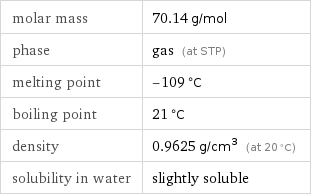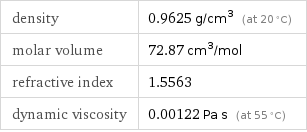Input interpretation

1, 1-dimethylcyclopropane
Chemical names and formulas

formula | C_5H_10 name | 1, 1-dimethylcyclopropane alternate names | cyclopropane, 1, 1-dimethyl- | gem-dimethylcyclopropane mass fractions | C (carbon) 85.6% | H (hydrogen) 14.4%
Lewis structure

Draw the Lewis structure of 1, 1-dimethylcyclopropane. Start by drawing the overall structure of the molecule: Count the total valence electrons of the carbon (n_C, val = 4) and hydrogen (n_H, val = 1) atoms: 5 n_C, val + 10 n_H, val = 30 Calculate the number of electrons needed to completely fill the valence shells for carbon (n_C, full = 8) and hydrogen (n_H, full = 2): 5 n_C, full + 10 n_H, full = 60 Subtracting these two numbers shows that 60 - 30 = 30 bonding electrons are needed. Each bond has two electrons, so the above diagram has all the necessary bonds. There are 15 bonds and hence 30 bonding electrons in the diagram. Lastly, fill in the remaining unbonded electrons on each atom. In total, there remain 30 - 30 = 0 electrons left to draw and the diagram is complete: Answer: | |
3D structure

3D structure
Basic properties

molar mass | 70.14 g/mol phase | gas (at STP) melting point | -109 °C boiling point | 21 °C density | 0.9625 g/cm^3 (at 20 °C) solubility in water | slightly soluble
Units

Gas properties (at STP)

density | 0.9625 g/cm^3 (at 20 °C) molar volume | 72.87 cm^3/mol refractive index | 1.5563 dynamic viscosity | 0.00122 Pa s (at 55 °C)
Units

Thermodynamic properties

specific heat of formation Δ_fH° | gas | -0.1169 kJ/g molar heat of formation Δ_fH° | gas | -8.2 kJ/mol (at STP)
Chemical identifiers

CAS number | 1630-94-0 Beilstein number | 2205180 PubChem CID number | 74202 SMILES identifier | CC1(CC1)C InChI identifier | InChI=1/C5H10/c1-5(2)3-4-5/h3-4H2, 1-2H3